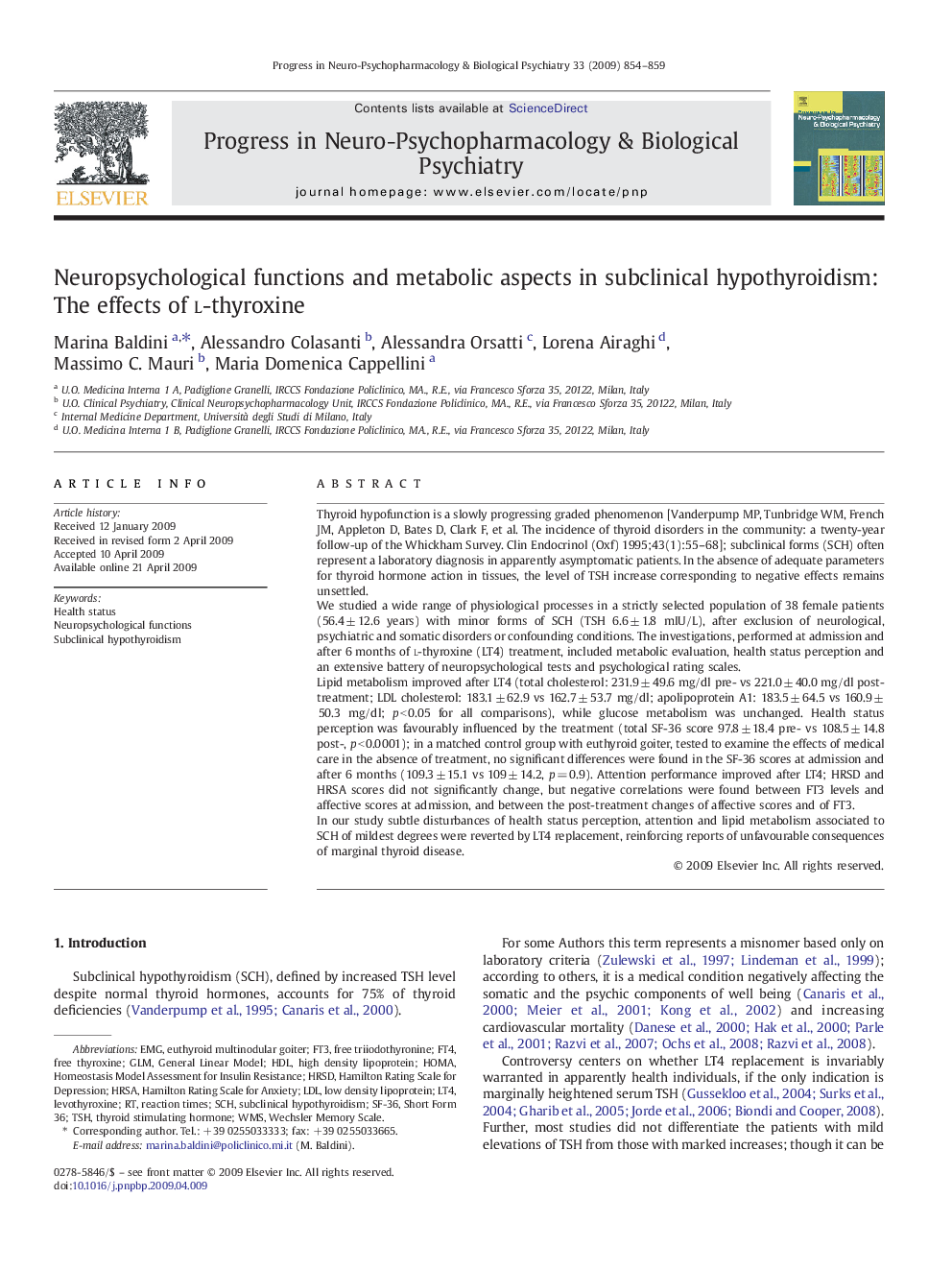| کد مقاله | کد نشریه | سال انتشار | مقاله انگلیسی | نسخه تمام متن |
|---|---|---|---|---|
| 2565943 | 1128070 | 2009 | 6 صفحه PDF | دانلود رایگان |

Thyroid hypofunction is a slowly progressing graded phenomenon [Vanderpump MP, Tunbridge WM, French JM, Appleton D, Bates D, Clark F, et al. The incidence of thyroid disorders in the community: a twenty-year follow-up of the Whickham Survey. Clin Endocrinol (Oxf) 1995;43(1):55–68]; subclinical forms (SCH) often represent a laboratory diagnosis in apparently asymptomatic patients. In the absence of adequate parameters for thyroid hormone action in tissues, the level of TSH increase corresponding to negative effects remains unsettled.We studied a wide range of physiological processes in a strictly selected population of 38 female patients (56.4 ± 12.6 years) with minor forms of SCH (TSH 6.6 ± 1.8 mIU/L), after exclusion of neurological, psychiatric and somatic disorders or confounding conditions. The investigations, performed at admission and after 6 months of l-thyroxine (LT4) treatment, included metabolic evaluation, health status perception and an extensive battery of neuropsychological tests and psychological rating scales.Lipid metabolism improved after LT4 (total cholesterol: 231.9 ± 49.6 mg/dl pre- vs 221.0 ± 40.0 mg/dl post-treatment; LDL cholesterol: 183.1 ± 62.9 vs 162.7 ± 53.7 mg/dl; apolipoprotein A1: 183.5 ± 64.5 vs 160.9 ± 50.3 mg/dl; p < 0.05 for all comparisons), while glucose metabolism was unchanged. Health status perception was favourably influenced by the treatment (total SF-36 score 97.8 ± 18.4 pre- vs 108.5 ± 14.8 post-, p < 0.0001); in a matched control group with euthyroid goiter, tested to examine the effects of medical care in the absence of treatment, no significant differences were found in the SF-36 scores at admission and after 6 months (109.3 ± 15.1 vs 109 ± 14.2, p = 0.9). Attention performance improved after LT4; HRSD and HRSA scores did not significantly change, but negative correlations were found between FT3 levels and affective scores at admission, and between the post-treatment changes of affective scores and of FT3.In our study subtle disturbances of health status perception, attention and lipid metabolism associated to SCH of mildest degrees were reverted by LT4 replacement, reinforcing reports of unfavourable consequences of marginal thyroid disease.
Journal: Progress in Neuro-Psychopharmacology and Biological Psychiatry - Volume 33, Issue 5, 1 August 2009, Pages 854–859